Why Mulan is the Ultimate Asian American
Editor’s Note: Benjamin To is a Los Angeles based writer, director, and producer who founded BAND WITH NO NAME Films. The views expressed in this piece are solely is own.
June 5th, 1998.
Summer was almost here. After school, the lobby of our local movie theater was packed with the energetic laughter and merriment from people of all ages, color, and gender. Walt Disney Animation Studios was about to drop a historical epic in the form of “Mulan,” and little did we all realize…it was a game changer. The titular character wore armor, fought with a sword, and was a Chinese girl. On opening day, I was hopping and skipping towards the box office as my Dad purchased tickets for himself, my brother, and I. One hour and twenty-eight minutes of musical, martial arts packed bliss had passed. Immediately afterwards, my Dad looked at us and said with an excited grin, “You guys want to see it again?”
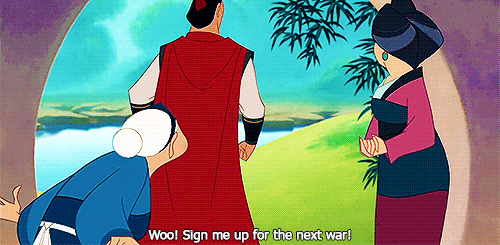
What makes an Asian American?
I come from a family of Vietnamese-Chinese refugees who immigrated to America after having been displaced by the war in the 1970s. There weren’t a lot of characters in American animation at the time who lived through what we had lived through. Mulan was one of my first action movie heroes. Her stubborn resourcefulness, idealistic optimism, and unconditional love for her family was unlike anything I had ever seen in a Disney character, and perhaps more importantly, she reminded me of people I already knew.
I grew up relating heavily to strong, three-dimensional female characters in animated films and television shows without ever really taking the time to think about why I did so. It was second nature. They were built in the same mold as my mother, my grandmother, my aunties, my cousins, and my friends. I was raised by a community of resilient women. Women who didn’t need to say anything to convey their confidence and power. It was an absolute, a known fact in my household. The moment Mulan charged up that mountain by herself against a frantic blizzard with one canon directed at the entire Hun army was not only a mesmerizing action sequence but it validated something deep in my conscience: the women in my life were made of steel.
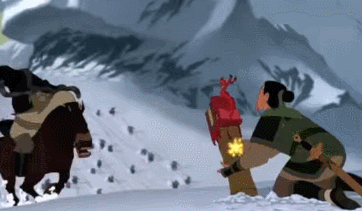
On a cultural level, the original 1998 animated film also quietly served as my introduction to what it meant to be Asian American in telling a story that honored a rich cultural past through the lens of today’s homegrown American talent. After allowing my fanboy excitement for the upcoming live action Mulan to subside, one lingering aspect that I’ve found to be thoroughly disappointing is the lack of Asian American involvement — behind and in front of the camera.
One facet of the 1998 film that often goes unmentioned is how many Asian Americans lent their talents to the film. Many of which were pioneers in the AAPI arts and entertainment community like Ming-Na Wen, Lea Salonga, George Takei, Pat Morita, James Hong, B.D. Wong, and Soon-Tek Oh. Also, one of the credited screenwriters from the original was a Chinese American woman by the name of Rita Hsiao, a former graduate in artificial intelligence sciences who later became a screenwriter during an era when there were hardly any Asian American female screenwriters.
That’s badass.
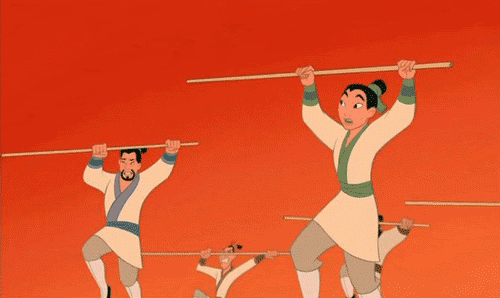
The Asian American experience and culture is one that often involves remixing. It’s an imperfect yet wonderful medley of the old with the new. It’s a relatively nascent artistic voice, and not all of us knew where we fit in the big picture of Asian perspectives. Many artists and storytellers have found their footing within their hyphenated identities by putting fresh spins on traditional stories.
There is a valid argument to be had of where does Mulan really belong in the conversation between Asians and Asian Americans? The original Mulan was a ballad that was first recorded in sixth century China, so naturally, mainland Chinese folks feel a sense of ownership over the character and story. However, let’s not forget that the 1998 film and the upcoming 2020 live action remake will be an American interpretation of the ancient ballad (even with the prominent Chinese production presence for the latter film). It will be specifically a remake of the American animated film, which had a plethora of Asian Americans, so it would be only be right to carry on with the same process, which requires Asian American nuance.
Dare I say, the new film needs Asian American voices more than ever.
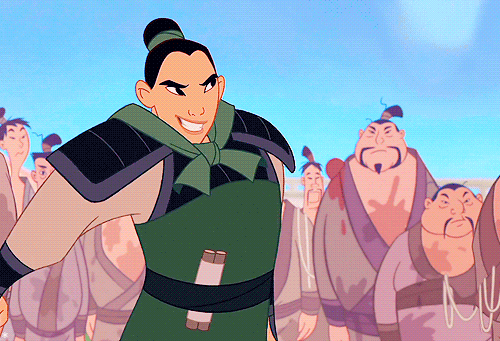
Beyond superficial sensibilities, it’s not as simple as a story about a mainland Chinese girl doing mainland Chinese things. Story elements like searching for a sense of belonging, balancing familial pride and honor all the while following the beat of your heart are all very Asian American specific experiences and themes. While it makes sense that the original Mulan, a traditional Chinese ballad and character, would belong in a Chinese storytelling space, it doesn’t mean the character doesn’t have room for growth and interpretation. With the globalization and accessibility of contemporary mainstream cinema, the bridges to communicate these stories across the rest of the world are getting smaller and smaller. Isn’t it time for a more progressive take on this age-old tale through the lens of a new generation of Chinese people who may or may not come from the mainland?
The 1998 film, while radical and progressive with its strong feminist take at the time, still had problematic elements. According to IMDB, “the film was originally planned as an animated short entitled ‘China Doll’,” about an oppressed and miserable Chinese girl who is whisked away by a British Prince Charming to happiness in the West. Then Disney consultant and children’s book writer Robert D. San Souci suggested making a movie of the Chinese poem, “The Song of Fa Mu Lan,” so the two projects were combined.” While I do have a soft spot for the 1998 Mulan, it’s still so shocking to believe that such a pitch even made it to an executive’s desk. Along with an ill-advised hodgepodge inclusion of Japanese aesthetics (cherry blossoms, kimonos, military armor, etc.), there were many story and visual elements that made it seem as though all East Asian cultures were interchangeable when they’re clearly not.

Another reason why new voices are needed.
A sense of authenticity was missing from what was a rousing crowd pleaser, and it feels evident because an expertly cultured voice was not in the forefront of the creative decision making process. One of the film’s directors, Tony Bancroft, even dismissed the idea of including Buddhist elements in the film because it went against his Christian values. In a 2013 interview with The Christian Post, Bancroft was quoted saying, “We did a lot of research to be culturally accurate and being a Christian, we made a pact that we wouldn’t go too deep into Buddhism but would stay true to our own beliefs. The ancestors are supposed to be fun, light, so that we didn’t give too much attention to Buddhist beliefs and history.”
While it can be interpreted as commendable that Bancroft stayed true to his religious values, this outlook ultimately proved to be a disservice, perhaps even disrespectful, to the culture surrounding such an East Asian character and story. An Asian American director, writer, producer, executive, actor — hell, an Asian American extra would not have let this slide. To bring forth a fully realized and sincere interpretation of this story and of this character requires artists to whole-heartedly care about maintaining its rich legacy as well as reinterpreting it in a modern context that does not bastardizes what made it so special in the first place.

It’s just disheartening to see how 2018 hasn’t changed much from 1998.
Sure, there are more creative properties with Asian Americans at the helm leading the charge, but a handful of movies and shows doesn’t equate to institutional progress. Within the messiness of the process, there are just so much of bombarding studio politics in making a movie that leads to why certain groups get ignored, but nevertheless, people are being ignored. With the flashy nature of the film industry, we often forget that these, in fact, are just jobs to a lot of people. A way to make a living doing what they love. Representation is important not only because we see ourselves in these characters on a screen, but it can also ignite, inspire, and gives us the courage and resolve to believe that we belong in any space, at any time, because our worth and our value is tied to more than how much money we can make for a film executive.
Being Asian American means navigating a space where your identity could be questioned at any given time (even amongst our own people), but being Asian American also means having cultural and humanistic complexity, depth, and wrinkles. No matter which side you’re on in this debate, “Mulan” is ultimately about finding ourselves within the ones we love. Mulan’s love for her father helped make the necessary sacrifices to save his life, his honor, all while discovering her own sense of purpose on a path of self-discovery in which she forged herself. That’s what makes her the model Asian American. Not the fighting, the musical numbers, the ham-fisted Eddie Murphy one-liners, but her soul.
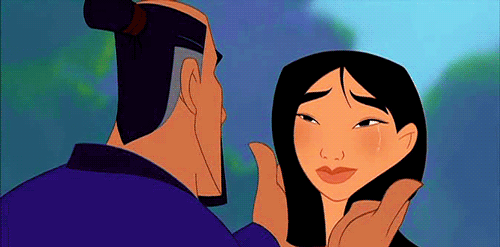
If it wasn’t for seeing “Mulan” twice in the theater on a beautiful summer’s day with my Dad back in 1998, the younger version of myself might not have thought a life in the arts was a viable future.
After Mulan, anything was possible.
About the Author: Benjamin To is a Los Angeles based writer, director, and producer who founded BAND WITH NO NAME Films. His work has been featured in numerous publications, such as NBC News, The Los Angeles Times, and The Huffington Post, for creating artistic discussions about media diversity and representation.
Featured Image via YouTube / RobbankunSWE
The post Why Mulan is the Ultimate Asian American appeared first on NextShark.
✍ Sumber Pautan : ☕ NextShark
Kredit kepada pemilik laman asal dan sekira berminat untuk meneruskan bacaan sila klik link atau copy paste ke web server : https://ift.tt/2vntMb7
(✿◠‿◠)✌ Mukah Pages : Pautan Viral Media Sensasi Tanpa Henti. Memuat-naik beraneka jenis artikel menarik setiap detik tanpa henti dari pelbagai sumber. Selamat membaca dan jangan lupa untuk 👍 Like & 💕 Share di media sosial anda!




















Post a Comment